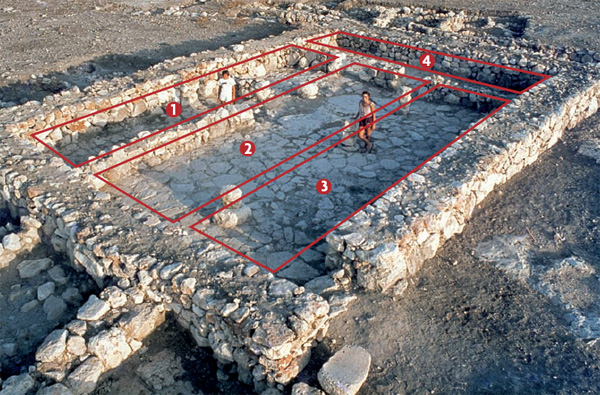Image Details

Isreael FInkelstein/Tel Aviv University
A HOUSE FOR EQUALS. This well-preserved four-room house was uncovered at the Iron Age I site of Izbet Sartah in the Judahite hill country. Such houses, characterized by rows of pillars and walls dividing the dwelling into three long rooms and an adjoining broad room (highlighted in red), were common to hill-country settlements of Iron Age I. The plan was uniquely adapted to the simple agrarian life of these settlers and may, as Avraham Faust argues, be another reflection of the egalitarian ethos that distinguished the Israelites from their wealthier and more cosmopolitan neighbors.
Equally important, the four-room house became the house of choice for almost every Israelite family during the succeeding Iron Age II, the period when Israelite ethnic consciousness and identity are fully attested in both Biblical and extra-Biblical sources.
